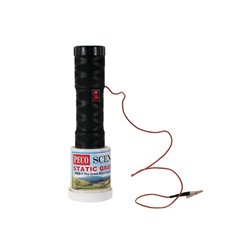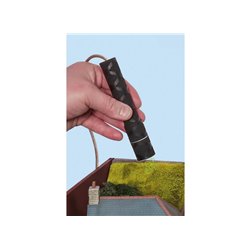For wargaming figures, a small coin or washer glued to the under side of the base will usually to do the job. This...
No products
Product successfully added to your shopping cart
There are 0 items in your cart. There is 1 item in your cart.
Search Tips
Christmas and New Year
We are dispatching orders every weekday apart from Christmas Day, Boxing Day and New Year's Day.
If you order is time critical, select next day delivery at checkout.
The shop in Sandown is closed from 25th December, reopening on 30th December.
How do I apply static grass?
Static grass is best applied using a static grass applicator.
There are several on the market and they can apply grass up to 12mm depending on which applicator you choose. Please note some will only allow you to use up to 6mm static grass while others will let you go up to twelve.
The the grass is electrostatically charged as it leaves the applicator making the grass fibres stand up, so that when they hit the glue, they stay standing giving you a lush grassy area.
Most applicators take a 9volt battery (the square one) which is enough to charge the grass.
On the applicator there is a wire which you connect to the wet PVA glue which completes the circuit and gives you the desired finish.
It sounds more complicated than it is, but it is really easy to use and can create excellent results.
Click here to receive the tips weekly in your mailbox. You can unsubscribe at any time.










